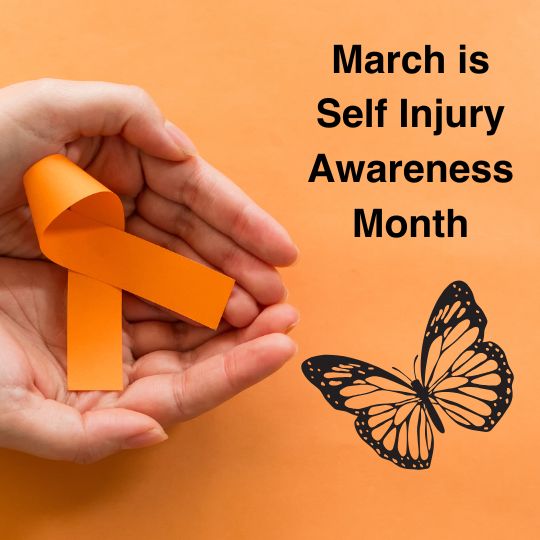|
March is Self-Injury Awareness Month, a crucial time for school counselors to recognize, support, and educate students struggling with self-harm. Self-injury, or non-suicidal self-injury (NSSI), refers to deliberate harm inflicted on one’s body without suicidal intent. It is often a coping mechanism for overwhelming emotions, anxiety, or trauma. While students who self-harm may not intend to take their own lives, they are at higher risk for suicidal thoughts and behaviors if left without support. As school counselors, we play a pivotal role in identifying warning signs, offering intervention, and fostering a supportive school environment. Recognizing the Signs. Students who self-harm often hide the fact, but the warning signs include unexplained bruises, scars, or cuts; wearing long sleeve shirts or pants, even in warm weather; avoiding activities that require changing clothes in front of others; frequent "accidents" or explanations that don't match up with injuries.  What To Do If You Suspect Self Harm. Creating a safe space by being empathetic and non-judgmental is key; your student needs to know that they are not alone and that you are there to help. What To Do If You Suspect Self Harm. Creating a safe space by being empathetic and non-judgmental is key; your student needs to know that they are not alone and that you are there to help.
If your student does disclose they are self-harming, the American School Counselor Association's Standards for School Counselors requires us to inform parents or caregivers so they have the opportunity to intervene. This helps ensure the student’s overall safety and can help the student get additional help outside of school. And that's a key point, because while school-based counseling can be a starting point, longer-term therapy should be referred to a mental health professional. But you can also suggest healthy coping mechanisms. They can range from journaling and artistic expression to physical activity. There are also harm minimization strategies and grounding techniques that students might engage in as an alternative to self harm, including snapping rubber bands on the wrist, holding ice, or punching a pillow or cushion. Although these techniques might not work for everyone, there is research that shows they can serve as a proxy for self-harm. The Butterfly Project, which supports self-harm sufferers who are on their journey towards healing, uses the drawing of a butterfly on the body as another way of reducing self harm. When someone feels the urge to hurt themselves, they draw a butterfly on their arm, hand, or other location. The goal is to let the drawn butterfly fade naturally; if they self-harm before the butterfly is gone, the butterfly "dies," not engaging in self harm lets the butterfly live as long as possible. Finally, raising awareness and reducing stigma will help break down barriers to getting help. Hosting informational workshops for students, parents and school staff; sharing community mental health services, and encouraging open conversations will help normalize seeking support for students who need it. By fostering a culture of understanding and support, school counselors can make a profound difference in the lives of students who struggle with self-injury, and create a compassionate school environment where every student feels seen, heard, and supported.
|